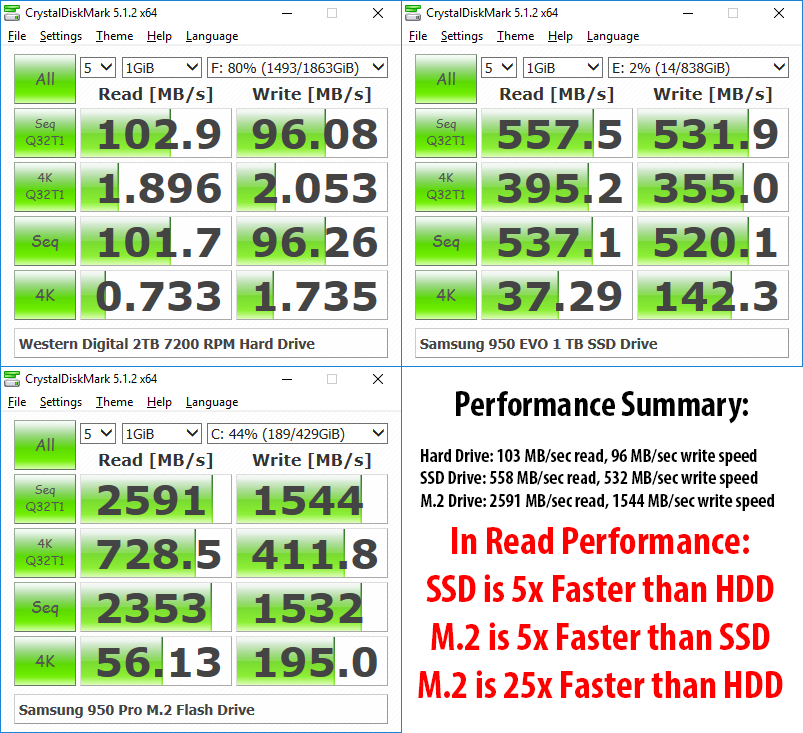ถ้าพูดถึงความแตกต่างระหว่าง SATA , PCIe และ NVMe แล้วตัวไหนดีสุด ตัวไหน เขียน/อ่าน แรงสุด
SATA is the market incumbent and dominant interface for connecting an SSD to the PC. It employs the command protocol AHCI (it also supports IDE) which was built with slower spinning disks in mind rather than flash memory. SATA transfer rates begin at 150 MB/s and max out at 600 MB/s for third generation technology. For most consumer uses of SSDs this is absolutely adequate.
PCIe (PCI Express) supersedes SATA as the latest high bandwidth interface. Entry level PCIe SSD speeds are two to three times faster than the older generation of SATA 3.0 SSDs mainly due to the number of channels contained by each to transfer data (roughly 10 for SATA and 25 for PCIe). However, depending on usage, real world benchmarks may not reflect this massive gain due to bottlenecks elsewhere in the PC. We leave it to your interpretation of thousand of real world benchmarks (e.g. OCZ RevoDrive 350 PCIe vs Samsung 850 Pro SATA 3.0) to assess whether the premium is justified for PCIe NVMe versus SATA SSDs
NVMe is the latest high performance and optimized protocol which supersedes AHCI and compliments PCIe technology. It offers an optimised command and completion path for use with NVMe based storage. It was developed by a consortium of manufacturers specifically for SSDs to overcome the speed bottleneck imposed by the older SATA connection. It is akin to a more efficient language between storage device and PC: one message needs to be sent for a 4GB transfer instead of two, NVMe can handle 65,000 queues of data each with 65,000 commands, instead of one queue that with the capacity for 32 commands, and it only has seven major commands (read, write, flush etc). NVMe delivers better performance and reduced latency and is a scalable, but at a price! Take a look at Samsung’s offering of this technology in the 950 Pro to see how performance and price compares. This particular drive relies upon a new M.2 internal mount on the PC motherboard, as presumably will other future NVMe based SSDs. NVMe will also be the protocol of choice for the next generation of storage technologies such as 3D XPoint.
After upgrading my large tower machine with all-new computer components, which include the new flash storage in M.2 form factor (I rely on the currently fastest consumer-grade M.2 drive, the Samsung 512 GB 960 Pro M.2 NVMe)
มีการเทียบ speed read/write , iops ระหว่างhdd 3 ประเภทครับ SATA , SSD , M.2 (NVMe)
จะเห็นได้ว่า M.2 หรือ (NVMe) จะมีประสิทธิภาพดีสุด แรงสุด ในส่วนของราคาก็แพงสุดเช่นกันครับ
